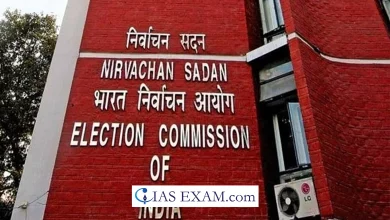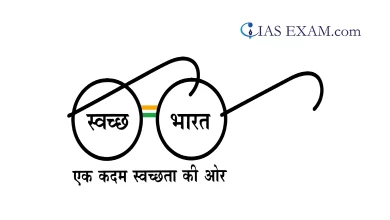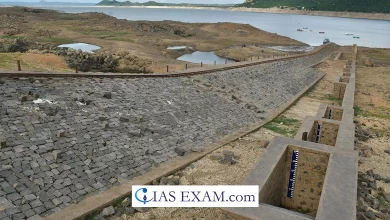
Context
The scientific and research community in India were filled with enthusiasm following the announcement in the Interim Budget for 2024-25, of a corpus of Rs 1 lakh crore for R&D Funding in India to bolster the research and innovation ecosystem. The decision to rebrand the slogan, ‘Jai Jawan Jai Kisan’ to ‘Jai Jawan, Jai Kisan, Jai Vigyan’ to now ‘Jai Jawan, Jai Kisan, Jai Vigyan, Jai Anusandhan’ is intended to reinforce the foundation of research and innovation for development.
Positive Aspects of R&D Funding in India
- Powerhouse of Academic Talent – Despite the comparatively lower share of GDP dedicated to R&D, India has emerged as a powerhouse in producing academic talent. India’s research output remains substantial, ranking third globally, with over 3,00,000 publications in 2022, highlighting the nation’s robust research ecosystem.
- Impressive number of Patent Grants – India also demonstrates commendable performance in patent grants, securing the sixth position globally with 30,490 patents granted in 2022.
- Emphasis on Autonomous R&D Laboratories and Institutions – A significant portion of R&D funding originates from the government, with considerable allocation directed towards autonomous R&D laboratories operated by the government. These laboratories serve a pivotal role in driving research and technology development with strategic implications.
- Provisions in Interim Budget – A corpus of Rs.1 lakh crore to be established with fifty-year interest free loan to provide long-term financing or refinancing with long tenors and low or nil interest rates. A new scheme to be launched for strengthening deep-tech technologies for defence purposes and expediting ‘atmanirbharta’ is also mooted.
Concerns regarding R&D Funding
- Low Investment – India’s R&D is witnessing significant growth, with a notable increase in Gross Expenditure on Research and Development (GERD). However, with R&D investment as a percentage of GDP standing at 0.64%, India falls behind major developed and emerging economies.
- Less Contribution by Private Sector – In India, the GERD is primarily driven by the central and state governments i.e. almost 50% whereas the private sector contributes only around 36%. This gap stems from a lack of coordination between the government agencies and a proper political will.
- Under-Utilisation of Allocated Funds – In 2022-2023, the Department of Biotechnology (DBT), used only 72% of its estimated budget allocation on Centrally Sponsored Schemes (CSSs)/Projects while the DST used only 61%. The Department of Scientific and Industrial Research (DSIR), which receives the lowest allocation for CSSs, spent 69% of its allocation.
- State Govt. lack of allocating adequate funds – As per the the RBI Reports, State Finances: A Study of Budgets 2023-24, only 10 states out of a total of 36 states and UTs in the country were covered under the study implying that research is not a priority for most States. The annual spending on research was also quite small in most States (0.09% of the GSDP on average), though Rajasthan emerged an outlier.
Steps to enhance R&D Funding in India
- Encouraging Private Sector Collaboration: India’s R&D ecosystem has its advantages in terms of efficiency, but could benefit more from strong private enterprises involvement and stronger industry-academia collaboration, facilitating knowledge transfer and fostering innovation.
- Increasing R&D Expenditure as Percentage of GDP: The significance of research and innovation cannot be overstated in fuelling economic growth, technological advancement, and global competitiveness. However, to fully realize the impact, it is crucial to assess the current R&D funding landscape in India and its resulting output.
- Mandating Proper Utilization of Allocated Funds: The Union Ministry of Science and Technology has consistently under-utilized its budget, so while the calls for increased funding – through both government and private sources – are legitimate, a strengthened budget utilization is also required to affect science outcomes.
- Finally, India also needs the bureaucratic capacity to evaluate science projects and, after allocations, monitor utilization. Building such capacity is a prerequisite for India becoming a science power by 2047.
- Investing in Human Capital: While financial investment is crucial, investing in human capital is equally important for the success of India’s R&D endeavors. Strengthening education and skill development in science, technology, engineering, and mathematics (STEM) fields is essential to nurture a talent pool capable of driving innovation and research excellence.
Conclusion
The allocation of Rs 1 lakh crore for R&D in the Interim Budget presents a significant opportunity to revitalize India’s innovation ecosystem and propel the country towards sustainable growth and development. However, realizing the full potential of this funding initiative requires concerted efforts to address structural challenges, streamline administrative processes, invest in human capital, and foster collaboration both domestically and internationally. By prioritizing research and innovation, India can emerge as a global leader in science, technology, and entrepreneurship, driving inclusive growth and prosperity for all its citizens.
SOURCE: The Hindu





.png)



